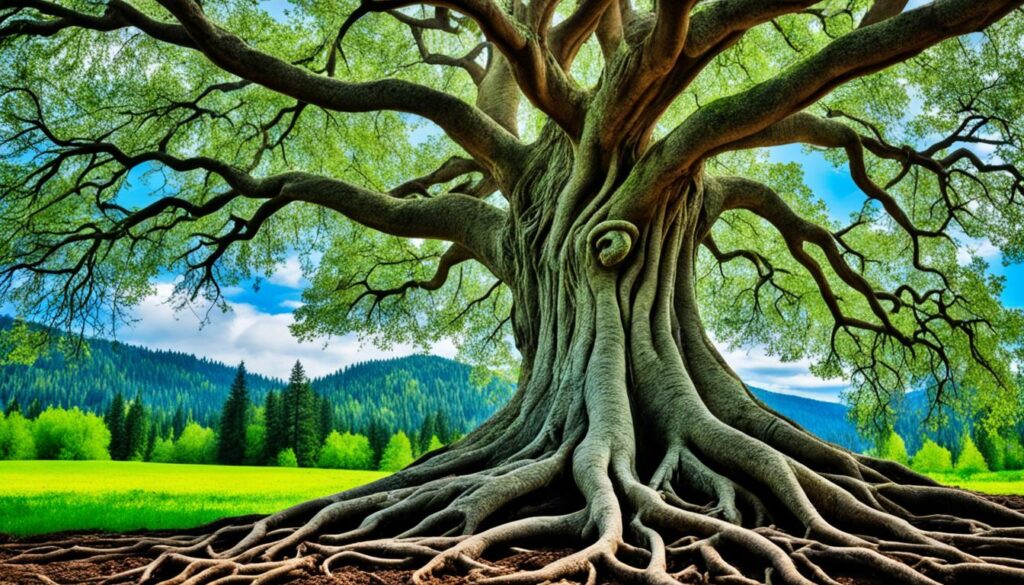Imagine a small village in ancient times. The villagers relied on their limited resources to survive each day. They knew the struggle of scarcity all too well – the constant fear of not having enough food, water, or shelter. It was a mindset born out of necessity, a mindset that prioritized self-preservation above all else.
As time passed, societies evolved, and the fight for survival became less immediate. However, the scarcity mindset endured, shaping the course of history. It was during the rise of capitalism in the 1600s that scarcity was intentionally weaponized by those in power.
The construction of race and the exploitation of marginalized groups were used to justify the unequal distribution of resources. The scarcity mindset became a tool to maintain control and perpetuate inequality. Marginalized communities, including the Asian American community, bore the brunt of this systemic oppression.
Today, the scarcity mindset continues to impact various communities. Within the Asian American community, it manifests in different ways, from internalized racism to the perpetuation of the Model Minority Myth. Understanding the historical context of scarcity mindset is crucial to challenging its effects and cultivating a more abundant mindset.
Key Takeaways:
- Scarcity mindset has evolved over time, from a survival instinct to a tool of power and oppression.
- The Asian American community has faced the impacts of scarcity mindset throughout history.
- Examining historical perspectives on scarcity mindset provides insights into its impact on society.
- Shifting from scarcity mindset to an abundance mindset requires conscious effort and a commitment to change.
- Understanding the historical context empowers individuals to dismantle the effects of scarcity mindset and embrace abundance.
Scarcity Mindset in the Asian American Community
Within the Asian American community, the scarcity mindset has manifested in various ways throughout history. Asian Americans have faced exploitation and marginalization, leading to the internalization of racism and oppression.
Historically, Asian Americans have often been exploited as workers, such as Chinese laborers who contributed to the construction of the transcontinental railroad in the past. Additionally, American colonizers established English-language nursing programs in the Philippines, further perpetuating the unequal distribution of resources and wealth.
This exploitation can be linked to capitalism and the accumulation of wealth at the expense of marginalized groups. As a result, Asian Americans have experienced in-group competition and a scarcity mindset that stems from the limited access to resources.
“Asian Americans have long endured systemic marginalization, both overtly and covertly. This marginalization has fostered a scarcity mindset that perpetuates intergroup competition and undermines solidarity.”
Moreover, the Model Minority Myth has played a significant role in perpetuating the scarcity mindset among Asian Americans. The myth portrays Asian Americans as financially successful and hardworking, which can undermine the need for dialogue and solidarity within the community.
By understanding the historical context of the scarcity mindset within the Asian American community, we can work towards dismantling its effects and fostering a sense of abundance. Recognizing and challenging systemic inequalities is essential in creating a more equitable society for all.
The impact of scarcity mindset in different eras:
| Era | Scarcity Mindset Manifestations |
|---|---|
| 19th Century | Exploitation of Asian laborers in railroad construction |
| 20th Century | Model Minority Myth perpetuation |
| 21st Century | In-group competition and marginalization within the Asian American community |
The Difference Between Scarcity Mindset and Abundance Mindset
It is important to distinguish between scarcity mindset and abundance mindset. A scarcity mindset is characterized by seeing limitations, thinking small, avoiding risk, and focusing on short-term gains. It is disempowering and contracts awareness. On the other hand, an abundance mindset is characterized by seeing opportunities, thinking big, embracing risk, and focusing on long-term goals. It is empowering and expands awareness. By shifting from a scarcity mindset to an abundance mindset, individuals can change their perspective and attract more abundance into their lives. This shift in mindset has the power to transform how we perceive and interact with the world around us.

“The quality of your life is determined by the quality of your mindset.” – Robert T. Kiyosaki
Cultivating an Abundance Mindset
To shift from a scarcity mindset to an abundance mindset, it is essential to adopt new beliefs and practices that empower and support individuals in achieving their goals. Cultivating an abundance mindset involves a mindset transformation, where individuals can expand their awareness, see opportunities, and attract more abundance into their lives.
Changing Beliefs
One of the first steps in cultivating an abundance mindset is changing our beliefs. We must recognize that the world is full of possibilities and that there is enough for everyone. Instead of focusing on lack and limitations, we need to shift our perspective towards abundance and abundance mindset transformation.
Cultivating an Attitude of Gratitude
An attitude of gratitude is a powerful tool for cultivating an abundance mindset. By focusing on what we already have and expressing gratitude for it, we shift our energy towards positivity and abundance. Practicing gratitude regularly, such as through daily reflections or a gratitude journal, helps us appreciate the abundance that already exists in our lives.
Creating Win-Win Situations
An abundance mindset seeks to create win-win situations where everyone involved can benefit. Instead of approaching interactions with a scarcity mindset, where one person’s gain is perceived as another’s loss, we can shift our mindset towards collaboration and cooperation. By finding solutions that benefit all parties involved, we can create a more abundant and prosperous outcome for everyone.
Shifting Focus from Limitations to Possibilities
A key aspect of cultivating an abundance mindset is shifting our focus from limitations to possibilities. Instead of dwelling on what we lack or what we cannot do, we need to train our minds to see the endless possibilities and opportunities that surround us. This shift in focus opens up new pathways and allows us to approach challenges with creativity and optimism.
Engaging in Acts of Service
Acts of service are a powerful way to cultivate an abundance mindset. By helping others and contributing to the well-being of our communities, we not only create a positive impact but also strengthen our own sense of abundance. Engaging in acts of service reminds us that we have something valuable to offer and that we are part of a larger interconnected network of abundance.
Surrounding Oneself with Like-Minded Individuals
The people we surround ourselves with can have a significant impact on our mindset. To cultivate an abundance mindset, it is important to surround ourselves with like-minded individuals who also embrace abundance and positivity. By seeking out and connecting with people who inspire and support us, we create an environment that reinforces our abundance mindset and helps us thrive.

By actively working on shifting from a scarcity mindset to an abundance mindset through these practices, individuals can embark on a transformative journey. This mindset transformation expands awareness, invites opportunities, and attracts more abundance into their lives. Cultivating an abundance mindset is an ongoing process that requires consistent effort and a commitment to personal growth. By embracing abundance and shifting our mindset, we can create a life of abundance and fulfillment.
How Has the Historical Context Contributed to the Development of Scarcity Mindset?
The historical context has significantly shaped the top books scarcity mindset. From economic depressions to wartime rations, scarcity has been a prevailing theme. This mindset has evolved as a survival mechanism, ingrained in people’s psyche over generations and influencing their behaviors and attitudes towards resources.
Conclusion
In conclusion, exploring the historical perspectives on scarcity mindset provides valuable insights into its evolution and impact throughout time. From its origins in the fight for survival to its manipulation by dominant groups, scarcity mentality has significantly influenced societies and perpetuated inequalities. By gaining a deeper understanding of the historical context of scarcity mindset, especially within the Asian American community, we can actively work towards unlearning this mindset and cultivating a more abundant and collaborative approach.
Shifting from a scarcity mindset to an abundance mindset requires a conscious mindset transformation and a dedication to personal and societal change. By embracing an abundance mindset, individuals empower themselves to overcome limitations and contribute to the creation of a more equitable and prosperous future for all. Recognizing that resources are not inherently limited and adopting a mentality that focuses on possibilities and opportunities can have a transformative impact on the way we perceive and interact with the world around us.
Historical perspectives serve as a reminder of how scarcity mindset has shaped societies and perpetuated inequality throughout history. By acknowledging this, we can break free from its grip and actively work towards building a more abundant and inclusive future that prioritizes collaboration, empathy, and shared resources. Through a collective effort to unlearn scarcity mindsets and cultivate abundance, we have the power to reshape our mindset and create positive change on both an individual and societal level.
FAQ
What is the scarcity mindset?
The scarcity mindset is the belief that resources are limited and acquiring resources for oneself comes at the expense of others.
How has scarcity mindset evolved over time?
In the past, scarcity mentality was tied to the fight for survival and the competition for resources. With the onset of capitalism in the 1600s, scarcity was intentionally weaponized to justify the unequal distribution of resources.
How has the scarcity mindset manifested in the Asian American community throughout history?
Asian Americans have faced exploitation as workers and marginalization, leading to in-group competition and the internalization of racism. The Model Minority Myth has also perpetuated the scarcity mindset among Asian Americans.
What is the difference between a scarcity mindset and an abundance mindset?
A scarcity mindset focuses on limitations, thinking small, and avoiding risk, while an abundance mindset sees opportunities, thinks big, and embraces risk.
How can one cultivate an abundance mindset?
Cultivating an abundance mindset involves changing beliefs, practicing gratitude, creating win-win situations, shifting focus from limitations to possibilities, engaging in acts of service, and surrounding oneself with like-minded individuals.

